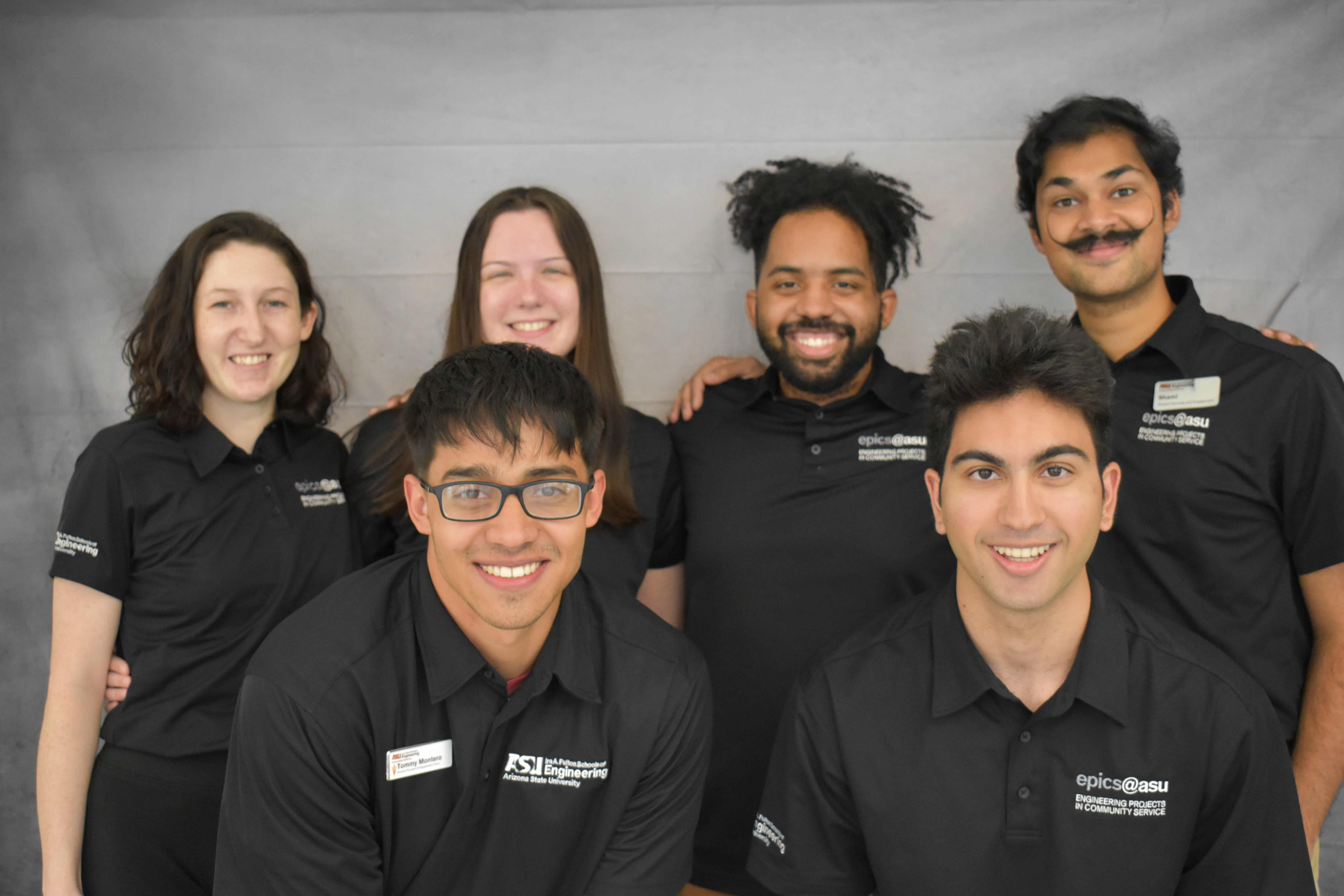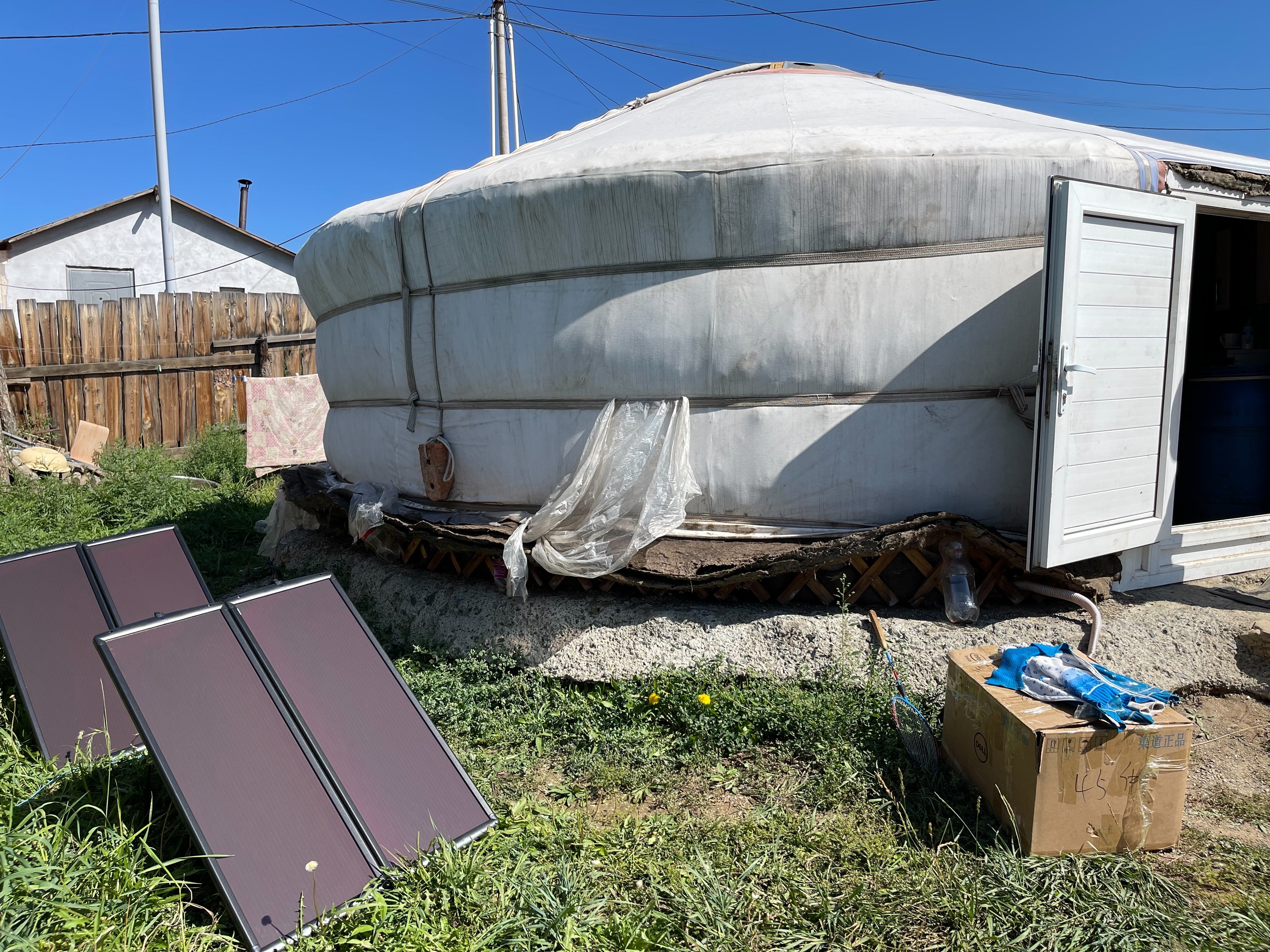It’s a mid-winter’s day and the temperature in Ulaanbaatar, the capital of Mongolia, is 10 degrees Fahrenheit.
Wanting to keep her family warm in their yurt — a portable, circular dwelling made of a lattice of flexible wood and covered in felt — and disconnected from the city’s gas utility system, a mother burns raw coal.
Smoke soon fills the yurt. With every breath, for more than an hour, the mother and her children ingest the smoke into their lungs.
More than 6,000 miles away, in January 2020, Shamsher Warudkar read an article in the bulletin of the World Health Organization. The article says that approximately 83,000 individuals living in Ulaanbaatar’s Ger Districts — located on the hills and mountains surrounding the city — are disconnected from Ulaanbaatar’s gas utility system. A UNICEF report says the lung function of children born and raised in Ulaanbaatar, where the average winter high temperature is 8.6 degrees Fahrenheit — is only 40% of their rural counterparts.
Warudkar, an aerospace engineering student at Arizona State University, asks Professor Jared Schoepf, director of the Engineering Projects in Community Service (EPICS) program, what can be done to help.
Three years later, the mother burns more raw coal to heat the family’s yurt. But a small, solar-powered air-filtration system dissipates the smoke in less than 30 minutes.
The children breathe easier, thanks to a team of nine ASU students who saw a problem and invented a solution.
“The students were passionate on making a positive impact for the community members that needed it the most,” Schoepf said. “I’m very proud of them.”
Members of the Project Koyash team. Back row, left to right: Sarah Johnston, Catherine Johnston (no relation), Jalen Goode, Shami Warudkar. Front row, left to right: Tommy Montero and Bryan Yavari. Photo courtesy Bryan Yavari
Sun power
The project’s name is Project Koyash, named after the Mongolian god of the sun.
So far, students working on the project have sent 13 of the air-filtration systems to Mongolia, and team leader Bryan Yavari, a senior majoring in neuroscience, has formed a nonprofit corporation called Koyash, whose purpose is to raise funding for the assembly and shipment of as many units as possible.
“The goal is to obtain as much funding as we can because at the end of the day, we have the data to prove the system works,” Yavari said. “We’re working to develop a local supply chain. But that’s for the longer-term future. Right now, people’s lives are at stake, so we have to get as many units there as we can.”
The EPICS program at ASU consists of approximately 550 students whose goal is to design, build and deploy systems to solve engineering-based real-world problems centered around four themes: community development, education, health and sustainability.
“Students work with a community partner to define the problem,” said Schoepf, adding that EPICS teams are currently working on 70 different projects. “Rather than assuming the problem and the best solution for the community, the students complete a needs assessment where they work with the community to define the user needs and engineering design requirements.
“The example I love to use is that if someone said they need something that anyone in their family can use, that’s the user need. The engineering design requirement is, ‘OK, children ages 5 to 10 must be able to learn how to use the solution in under five minutes. Whatever we do must be simple enough that the children can help with the use of the solution for the long-term success of the project.'”
When Yavari, Warudkar and the rest of the team got together in the fall of 2020 (COVID pushed the project back several months), they started brainstorming by breaking the project down into two parts: What is the problem, and what are the user needs — which in this case was electrification and filtration.
Originally, the team investigated alternative fuel sources to reduce the air pollution; however, after talking with the community members, they realized those solutions were too expensive and outside air pollution would still enter their home and be unsafe for the families. Instead, they decided to investigate reducing the air pollution through filtration.
Because electricity isn’t available to families living in the yurts and Ulaanbaatar receives more than 290 days of sun per year on average, powering an air-filtration system with solar panels became the clear choice.
The filtration system is powered by solar panels, seen here outside of a yurt in Mongolia. Photo courtesy Bryan Yavari
They connected the solar panels to a charge controller — the controller regulates the voltage supplied by the panels to batteries — and then connected the controller to a rechargeable car battery. The battery, through an inverter, was hooked up to a multi-faceted air filter — one side is an activated carbon filter and the other an air ionizer filter.
The system also contained an Arduino the team built — “it’s kind of like the brain of the system,” Yavari said, which regulates the battery percentage, turning the charging from the solar panel off if the battery percentage becomes too high. Therefore, the system will not overheat and will run autonomously.
Warudkar said that “a battery may or may not have been lit on fire at some point in the initial prototyping stages.”
Through testing
The team spent the entire 2020 fall semester testing the power system to see if all the components worked. The next hurdle was replicating the smoke-filled conditions in the yurts.
Fortunately, Warudkar’s sister, who lives in Tempe, has a shed in her backyard. The team covered up the ventilation holes inside the shed, purchased a meat smoker, packed it with coal and for nearly a year conducted tests, filling the shed with smoke in order to determine how the electrical components responded and what filters worked best.
Their system worked, obtaining an air quality index value of four; an AQI value of 50 or below represents good air quality.
Because most of the parts were purchased off store shelves, the per-unit cost came to only $400. Also, the inverter, battery and Arduino fit inside a weatherproof box that’s just 12 inches high, 8 inches wide and 6 inches deep.
“A lot of the inventions we do consist of taking parts that already exist and integrating them together in a new, unique way,” Schoepf said. “That’s something we push heavily in the class in terms of working with our international partners. The last thing we want to do is create something that’s so drastically complex there’s no way to fix it or do maintenance. This ensures long-term success of the project.”
With the invention validated, Yavari reached out to the Taiwan Fund for Children and Families, which operates in the area. The team collaborated with the Mongolian Consulate, a system was sent for testing and, soon after, 12 more were shipped to Mongolia.
“This system is great for the families in Ulaanbaatar,” said Bayar Be, one of Project Koyash’s community partners in Mongolia. “It’s easy to use and effective at filtering the air.”
Yavari is currently collaborating on a research project with pediatricians to determine the impact their solution is having on the children’s lives.
“It makes such a big difference in those children’s developmental stages for the families that are there,” Yavari added. “It can help extend and save lives.”
Top photo: Volunteers from the Taiwan Fund for Children and Families helps a Mongolian woman set up the portable air-filtration system invented by ASU EPICS students. Photo courtesy Bryan Yavari
More Science and technology

Ancient sea creatures offer fresh insights into cancer
Sponges are among the oldest animals on Earth, dating back at least 600 million years. Comprising thousands of species, some with lifespans of up to 10,000 years, they are a biological enigma.…

When is a tomato more than a tomato? Crow guides class to a wider view of technology
How is a tomato a type of technology?Arizona State University President Michael Crow stood in front of a classroom full of students, holding up a tomato.“This object does not exist in nature,” he…

Student exploring how AI can assist people with vision loss
Partial vision loss can make life challenging for more than 6 million Americans. People with visual disabilities that can’t be remedied with glasses or contacts can sometimes struggle to safely…


